A Third-Party Logistics Company, also referred to as a 3PL, is a service provider that handles warehousing, laborers, shipping, and more, on behalf of another company. In this guide, we’ll discuss what a 3PL focused specifically on eCommerce looks like, how they run, areas of opportunity, and potential areas for increased operational efficiencies.
What Does an eCommerce-Focused 3PL do and why?
Many eCommerce companies experience challenging logistics issues, which can derail the growth trajectory of their core business: digital commerce.
We’ve seen many eCommerce brands who have had explosive growth over a short amount of time struggle or have to delay their next phase of growth due to their lack of knowledge in eCommerce logistics. Some of these companies spend a good chunk of their time doing crash courses in logistics, only to fail, while others learn it so well they start offering outsourced 3PL services of their own.
Third-party logistics companies, or 3PLs, provide valuable services, which can help eCommerce sellers accelerate their growth or become more profitable by leveraging their eCommerce logistics expertise. Outsourcing certain parts of the eCommerce process like inventory management, storage, and order fulfillment can be a great shortcut on their growth journey and can let brands focus on their core business. As you can see, there are some serious benefits that come with working with a third-party logistics company.
At Shipedge, we’ve been working with 3PLs and eCommerce brands for over a decade and support clients running third-party logistics companies on 6 continents today. You can say we’ve been around the block once or twice and have picked up on some interesting trends when it comes to what successful versus unsuccessful 3PLs do in different phases of their growth. We created the Essential Guide to eCommerce Fulfillment for 3PLs to save you some time and help guide you while you build your massively successful outsourced logistics offering.
Check out one of our most recent success stories here.
The Financial Opportunity for 3PLs
Online shopping has become a normal part of our everyday lives. People are busier than ever and using technology to buy things online in a couple of clicks is a no-brainer. The greater eCommerce market itself has been growing exponentially for some time and companies like Amazon have become some of the most valuable businesses on the planet. According to Statista, “revenue in the eCommerce market… is expected to show an annual growth rate (CAGR 2022-2027) of 12.24% resulting in a projected market volume of US$6.43tn by 2027.”
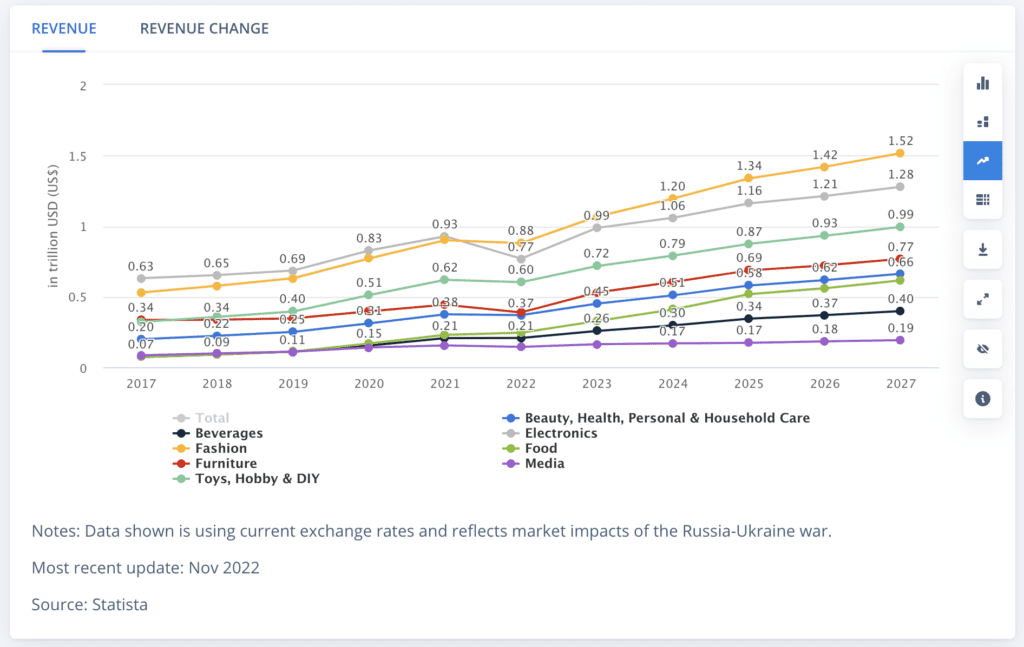
This is all pretty great news for logistics companies providing outsourced services to support the rapidly growing eCommerce industry. Most consumers don’t think through what happens after they click their cart to checkout online, and they don’t want to unless their order is delayed or the wrong items show up. This hidden industry is actually one of the most important parts of the eCommerce process, it’s what really allows merchants to sell goods online.
Grandview research found that within the broader warehouse storage and fulfillment services industry that, “the shipping fulfillment service segment led the market and accounted for the maximum share of more than 35.6% of the global revenue in 2021.” Furthermore, they estimated that the, “e-commerce fulfillment services market size was valued at USD 86,449.97 million (86.5 Billion dollars globally with 20.7 Billion in North America alone) in 2021 and is expected to grow at a compound annual growth rate (CAGR) of 9.5% from 2022 to 2030.” So, it’s a pretty big opportunity and we hope to give you some of the best practices and knowledge we’ve gained over the years helping other companies carve out their own piece of the eCommerce fulfillment services market.
Why are we sharing this knowledge?
We’ve seen many eCommerce and logistics-savvy founders start from scratch and build massively profitable services businesses. We’ve also seen 100-year-old logistics companies get into this subset of the 3PL market and use their extensive industry experience to grow their revenues while offering world-class fulfillment services. Other companies have also tried and failed because they didn’t utilize industry best practices to operate efficiently or profitably while offering eCommerce logistics services.
We hope to enable companies to enter this segment by getting off the ground in the right way and improving how companies with a current 3PL offering operate.
Additionally, we provide a robust 3PL software platform to facilitate the entire 3PL fulfillment process from order management and warehouse management to billing, shipping, or anything else you can imagine. Helping 3PL companies start in eCommerce fulfillment is in our DNA, whether it’s through helpful information or the software to power the entire process.
eCommerce Orders & 3PL Integrations
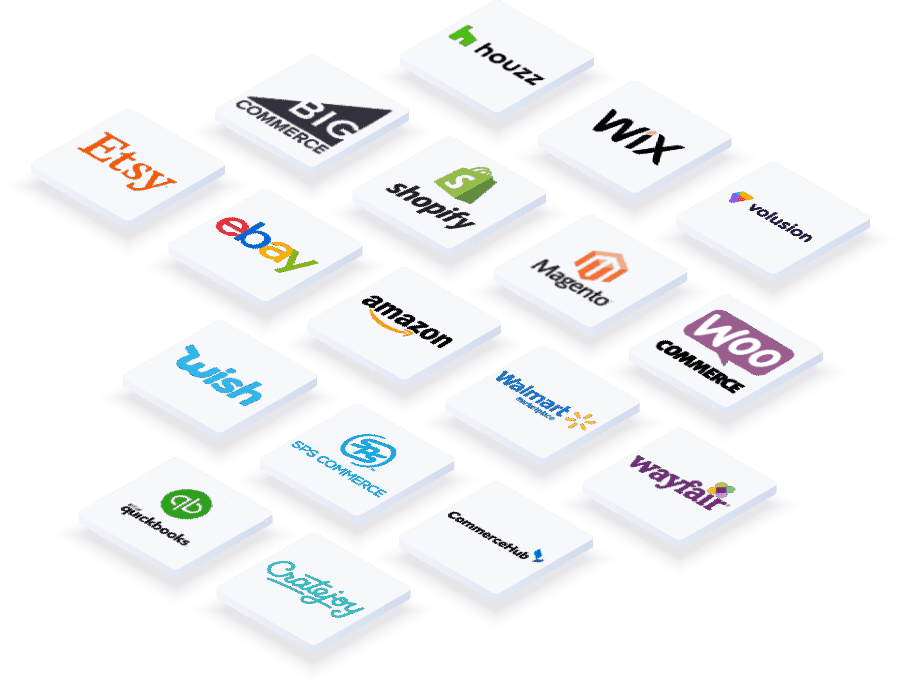
One of the most important things you will need to have are integrations with your client’s shopping carts, marketplaces, and selling tools. This will likely come up in the prospecting phase when a potential client first starts vetting your 3PL services to make sure you are the best partner for them. It may even mean the difference between you getting the account or losing them to a competitor.
If you don’t have integrations with their eCommerce selling channels, you will not have an easy way to receive their orders for fulfillment in the first place. The typical 3PL warehouse uses an order management system to integrate all these channels to do the following:
Getting your client’s orders into an order management system (OMS) for fulfillment
Integrating channels like shopping carts, marketplaces, or selling tools will allow your system to automatically import orders in real-time as they are placed on the websites or apps where your client is selling their products. These integrations are usually set up in a vendor portal interface either by your team or directly by the client. We’ve found that the simpler these integrations are to set up the better your relationship with your client will be and showing that a simple setup process to clients actually helps you gain new clients. That’s why most of our 3PL integrations can be set up in as little as a few minutes with a couple of clicks.
It is also exceedingly important to have a large list of integrations that you can connect to as potential clients are actively searching for 3PLs who already have the integration capabilities they need. Once a channel is integrated, your client can typically sit back and simply monitor the progress from their vendor portal knowing that their orders are in good hands with your organization managing their fulfillment. We’ve onboarded many 3PLs who have moved over from other 3PL software specifically so they can gain more customers.
Feel free to check out our full integrations list here. New integrations are added frequently as new channels become popular, so you can rest easy that you will have the integrations your potential customers are looking for when they ask. If you need new integration channels we also have a quick turnaround time for custom development in special cases.
Pushing order fulfillment updates back to channels
Your clients are going to want to know the fulfillment status of their eCommerce orders as they go through your pick, pack, and ship cycle. But more importantly, they are going to want those updates to go back to their shopping carts, marketplaces, and selling tools as well. This is primarily because they need to send shipment and order tracking information back to their customers after the order has been placed.
For example, when you order something on Amazon, you are notified when the order has shipped and will get tracking updates along the way from the parcel shipping carrier.
In the case of a merchant using a 3PL as their order fulfillment service, the 3PL software will generate a shipping label with a parcel carrier (such as USPS), then takes the tracking information from that shipping label and pushes it back to the integrated marketplace (which, in this case, is Amazon).
After Amazon receives tracking information it sends out an email or notification to the customer and you can send shipping updates because of that provided information on their website.
Updating inventory quantities and stock availability
Another essential service that third-party logistics companies provide for eCommerce companies is warehousing and inventory management. The client will expect you or your 3PL system to know how much stock you have in real-time. Most warehouse management systems can help you make inventory more visible, but having a 3PL warehousing system that can report inventory quantities back to online selling channels like shopping carts or marketplaces is essential for today’s eCommerce sellers.
A major reason for warehousing and inventory management is that having accurate and real-time stock availability in eCommerce channels prevents overselling. Overselling can create terrible customer experiences and drive up the cost of doing business online.
Two of the most important considerations for eCommerce profitability are customer acquisition cost (CAC) and customer lifetime value (LTV). Imagine you are a customer excited about buying a product but being told it’s not available. This would cause many people to ask for a refund, meaning that the marketing cost to get that customer onto the site was lost and generated no revenue for the company. The lost customer is also unlikely to buy from your client again.
As a third-party logistics service provider, it’s extremely important that your team and the software you use help your eCommerce fulfillment client avoid losing customers at all costs. After all, helping your customer sell more online generates more order fulfillment revenue for your 3PL. Thus, if your client is able to use your 3PL software platform to avoid these pitfalls, they are much less likely to leave you (even if the 3PL down the street offers them slightly better shipping rates)!
Next part of this guide we will discuss the broad topic of receiving inventory.
Discover how our WMS can improve your business
Did you find this guide helpful? Please consider sharing on social media for your friends/coworkers to see using the buttons below.










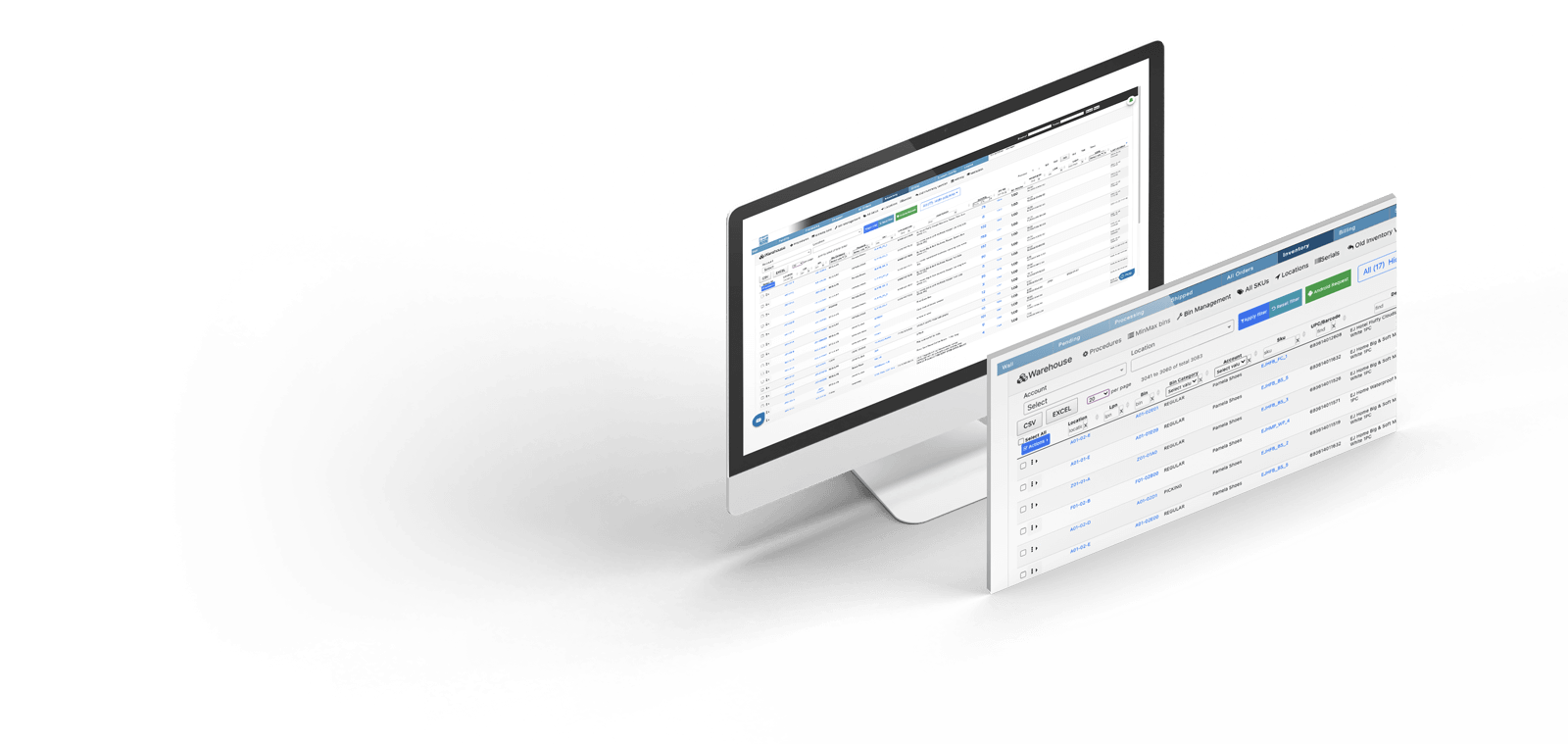
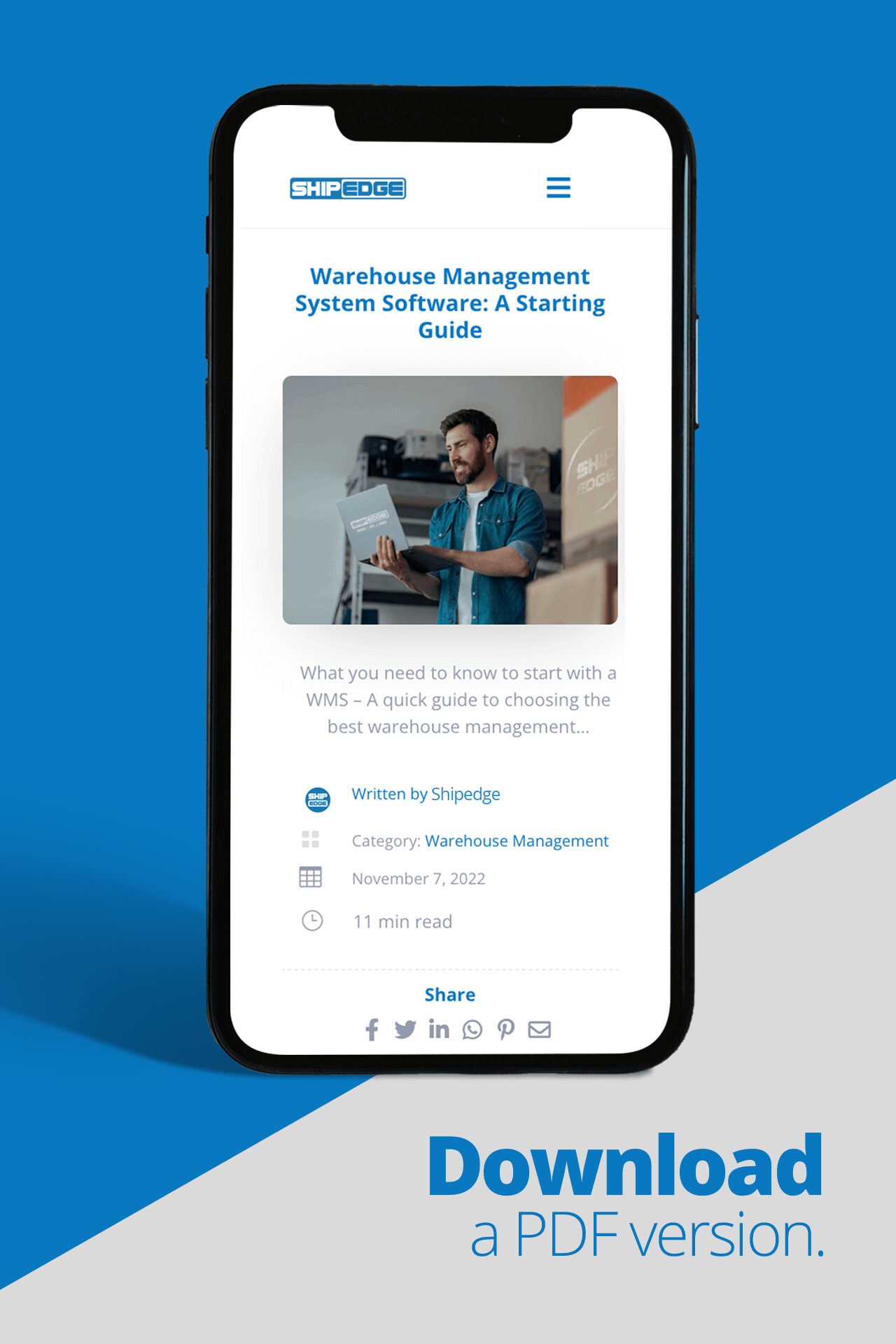
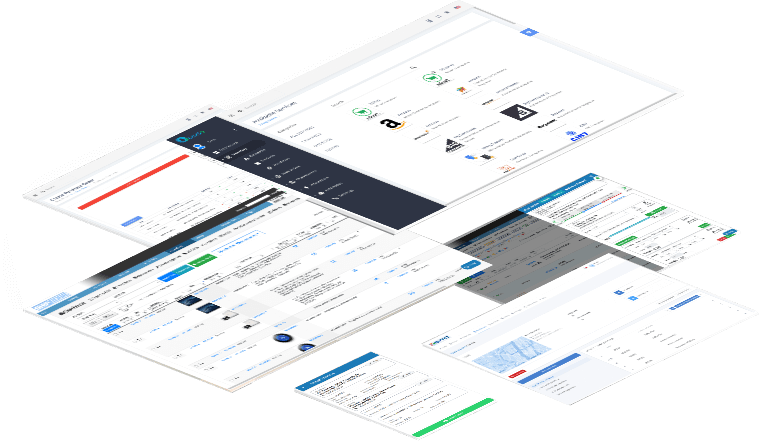

0 Comments